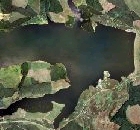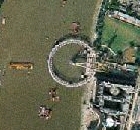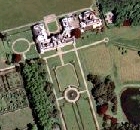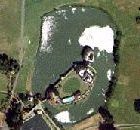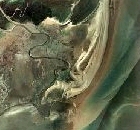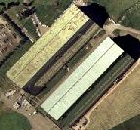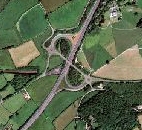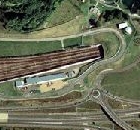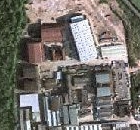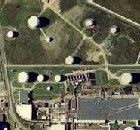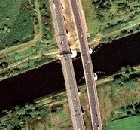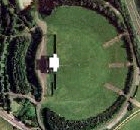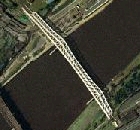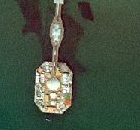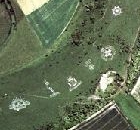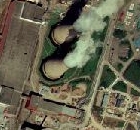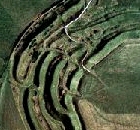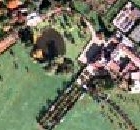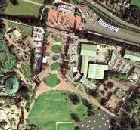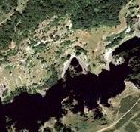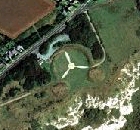The Empire Stadium, as
Wembley Stadium was originally known, was built in just 300 days at a cost of £750,000, and constructed from 25,000 tons of ferro concrete, 1000 tons of steel, and over half a million rivets.
The stadium closed in 2000 for redevelopment. The new National Stadium is currently under construction, at a 2003 estimated cost of £757 million, and is now scheduled to open May 13, 2006 with that year's FA Cup Final.
The new design is for an all-seated capacity of 90,000 protected from the elements by a sliding roof. The stadium's signature feature is a steelwork lattice arch with a 315 metre span, erected some 22° off true, and rising to 133 metre tall. The arch was raised for the first time during construction of the Stadium in June 2004.
In this photograph the car park seems full while the stadium is empty. This might be due to the weekly market held on Sunday mornings which covers the entire parking area.
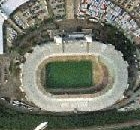
Queen : Live At Wembley Stadium
